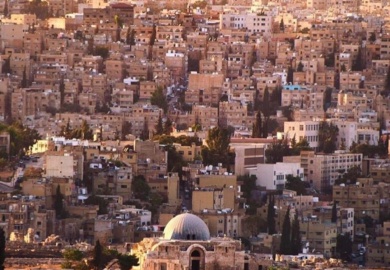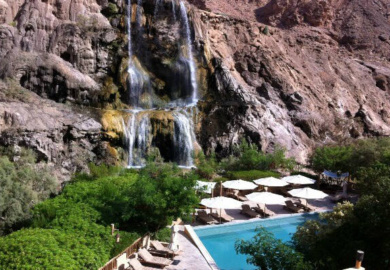ALJUN
The marvels of nature and the genius of medieval Arab military architecture have given northern Jordan two of the most important ecological and historical attractions in the Middle East: the sprawling pine forests of the Ajlun-Dibbine area, and the towering Ayyubid castle at Ajlun, which helped defeat the Crusaders eight centuries ago.
Ajlun Castle (Qal’at Ar-Rabad) was built by one of Saladin’s generals in 1184 AD to control the iron mines of Ajlun, and to deter the Franks from invading Ajlun. Ajlun Castle dominated the three main routes leading to the Jordan Valley and protected the trade and commercial routes between Jordan and Syria; it became an important link in the defensive chain against the Crusaders, who, unsuccessfully spent decades trying to capture the castle and the nearby village.
The original castle had four towers, arrow slits incorporated into the thick walls, and was surrounded by a moat averaging 16m in width and up to 15m deep.
In 1215 AD, the Mameluk officer Aibak ibn Abdullah expanded the castle following Usama’s death, by adding a new tower in the southeast corner and a bridge that can still be seen decorated with pigeon reliefs.
The castle was conceded in the 13th century to Salah ed-Din Yousef Ibn Ayoub, ruler of Aleppo and Damascus, who restored the northeastern tower. These expansion efforts were interrupted in 1260 AD, when Mongol invaders destroyed the castle, but almost immediately, the Mameluk Sultan Baybars re-conquered and rebuilt the fortress.
Ten Salah ed-Din soldiers are guarding the castle every day of the week. They are placed at the four different gate levels that the castle has. Two are on the roof where the yellow Mameluk is flying. Siege ladders leaning on the wall add to the war-like atmosphere
Ajlun is just a short journey from Jerash through pine forest and olive groves and boasts scores of ancient sites, including watermills, forts and villages, all in the beautiful hills and valleys of northern Jordan.
Nearby is the Ajlun Nature Reserve, a 13 sq. km protected area of outstanding beauty and diverse wildlife. Within the reserve are two nature trails and chalet-style accommodation. The reserve is managed and maintained by the Royal Society for the Conservation of Nature (RSCN).




Facebook Comments